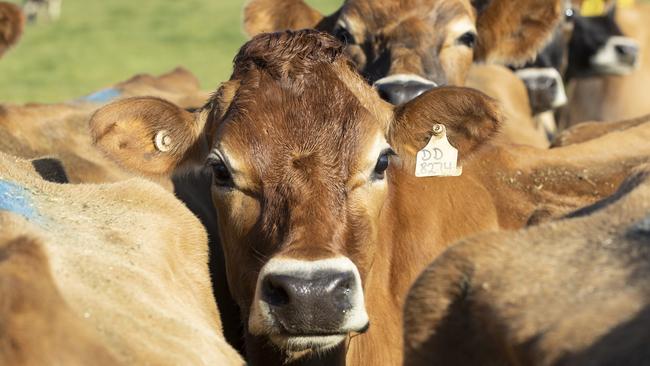Climate Change Authority review suggests Australians eat less red meat to reduce emissions
The government agency advising Anthony Albanese on climate has suggested Australians make the change, amid revelations the body may not give the Prime Minister crucial advice on a 2035 target until after the election.

The government agency advising Anthony Albanese on climate change has suggested Australians could eat less red meat to help reduce the nation’s greenhouse gas emissions, amid revelations the body may not give the Prime Minister crucial advice on a 2035 target until after the election.
The Climate Change Authority’s review into what six sectors – electricity and energy, transport, industry, agriculture and land, resources and the built environment – could do to reach net zero by 2040 or 2050 was released on Thursday, championing solar, wind and batteries as technologies that would get Australia “much of the way” there.
The net zero by 2040 scenario shows a 2035 target of 75 per cent compared to a 2035 target of 64 per cent to achieve net zero by 2050.
Under its proposed pathway to decarbonise agriculture, the CCA says emissions reduction could be achieved “through switching preferences away from higher-emissions products, such as beef and lamb, towards animal meats with a lower emissions intensity, such as chicken, pork and kangaroo”.
“Shifts in consumption patterns that include lower emissions protein sources could represent another pathway to reducing emissions from meat production. Alternative proteins are plant-based and food-technology alternatives to animal protein,” the review states.
The National Farmers Federation hit out the “concerning” proposal. “The idea that alternative animal proteins could replace red meat in Australia’s unique rangelands is severely misguided,” NFF president David Jochinke said.
“The NFF strongly opposes this notion, maintaining that a balanced and nutritious diet includes red meat.”
Climate Change and Energy Minister Chris Bowen said: “I have personal preferences – I like my steak rare, others prefer a well-done Angus – but I won’t be telling Australians what to eat, and neither will the government.
“The Climate Change Authority’s pathways review is not recommendations to government, but rather information and analysis to inform the community, businesses, policymakers, investors and governments at all levels on what’s needed for a robust but responsible transition.”
The backlash from farmers came as The Australian confirmed the CCA wouldn’t be able to deliver the government key advice it requires to inform its decision on a 2035 target until the new year at the earliest.
CCA chair Matt Kean, who was hand-picked by Mr Bowen, said the release of the advice wouldn’t be “dictated by domestic political timetables”, leaving open the possibility of it coming after the federal election.
“The Climate Change Authority’s role is to provide independent, frank and fearless advice to the parliament and to the government of the day, irrespective of political colour,” Mr Kean, a former NSW Liberal treasurer, said.
“That advice needs to be informed by all of the facts and that’s why we will take our time to do the appropriate work to ensure the recommendations we make are as robust as possible.”
Peter Dutton, who won’t take 2030 or 2035 targets to the election, demanded Mr Albanese release modelling to “allow the Australian people to understand before they vote how much more exponential price increases we will see in electricity bills with the 2035 commitment”.
The Greens blasted Mr Albanese for “letting Peter Dutton set the government’s agenda”, after The Australian revealed Labor may delay unveiling its 2035 climate target beyond February.
The CCA review also notes nuclear power is banned under federal, state and territory legislation and the prospect of nuclear power stations in Australia was further diminished because of its high cost compared to other low-carbon generation technologies.
“Australia’s lack of experience in building and managing nuclear power stations may reasonably lead to additional costs for a first-of-a-kind unit deployed (here),” the review states.
“The estimated lead time of 15 to 20 years before operation suggests this technology cannot make a timely contribution to replacing the generation capacity of retiring coal-fired power stations or to helping Australia achieve its carbon budget targets to 2050.”




To join the conversation, please log in. Don't have an account? Register
Join the conversation, you are commenting as Logout